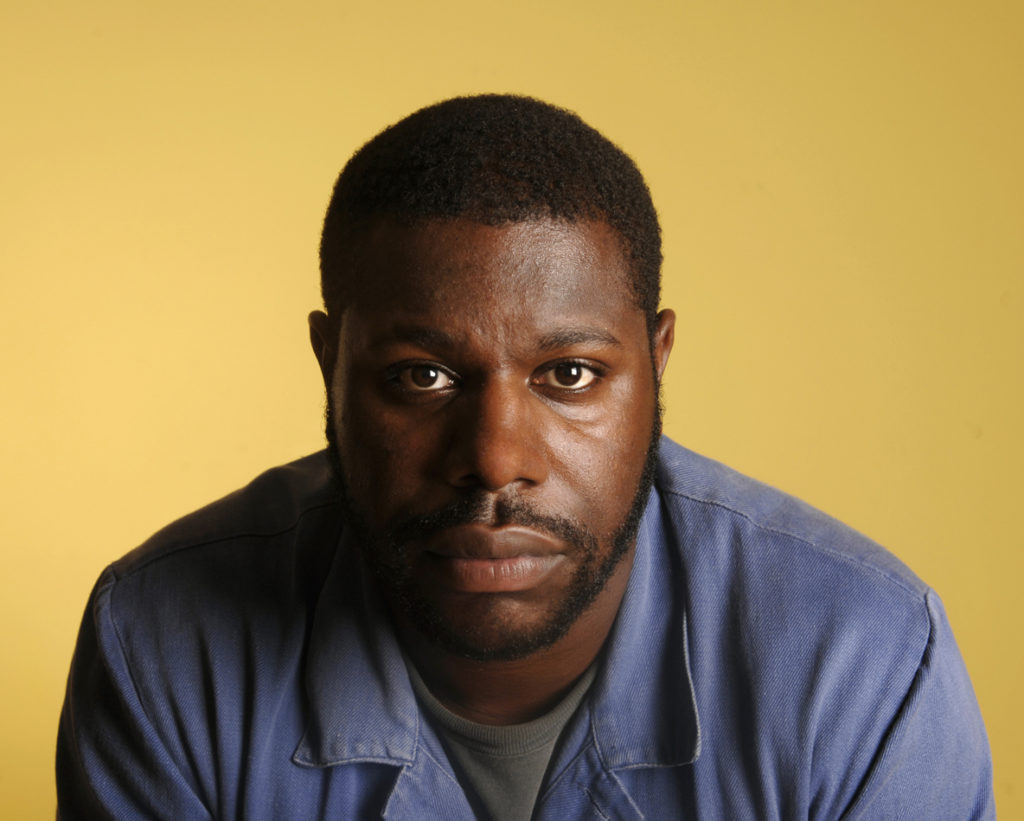People
Oscar Puts Steve McQueen Beyond Contemporary Art
With cinema, Steve McQueen has found the platform he was looking for.

With cinema, Steve McQueen has found the platform he was looking for.

Coline Milliard

Indomitable. That’s how Brad Pitt described Steve McQueen during the Oscars Ceremony last night, when 12 Years a Slave—the harrowing story of a man sold into slavery, co-produced by Pitt and directed by McQueen—won Best Picture award. McQueen is no doubt a film force to be reckoned with, embraced and feted by Hollywood. And it’s within Hollywood that the artist has found the platform he was looking for.
No matter how you look at it, McQueen’s career is a success story. Enrolling at Goldsmiths College in 1991—hot on the heels of the college’s YBAs—was the first step in a trajectory that soon made him one of Britain’s most celebrated artists. The early short film Bear (1993), which shows two men (one of them McQueen) circling each other as if readying themselves for a fight, was the first success followed by other successful and often visceral, unsettling art films that quickly gained critical acclaim. Not yet 30, McQueen had a solo show at MoMA in 1997. Two years later he won the Turner Prize, Britain’s most prestigious art accolade.
But contemporary art was always too small a world for McQueen. When I interviewed the artist for Numero ahead of his representation at the Venice Biennale in 2009, he told me how certain topics needed narratives to find their audience. “Anyone can tell you a story,” he told me then, “but not everyone is steeped in the whole idea of western art.” This struck me as somewhat surprising for someone who had until the year before been best known for experimental filmmaking. But McQueen wanted to explore other routes, and he had already begun with his first feature film Hunger (2008), a grueling account of IRA Bobby Sands’ hunger strike.
Hunger quickly became one of the key films tackling The Troubles in Northern Ireland—a subject that remains incredibly raw. It propelled McQueen towards very different spheres. His work started to be discussed in mainstream media in a way that was unthinkable in Britain even for high profile events such as the Turner Prize. Hunger, and later Shame, which addresses sex addiction, attracted viewers who might have never heard of the artist before, and who had perhaps never set foot in a contemporary art museum. However big his art career, it’s with Hunger that McQueen’s voice truly started to be heard.
It is significant that while the artist was working on Hunger he went to Iraq and embedded in the British army in Iraq as an Official War Artist. McQueen found himself unable to shoot a film. After much reflection, he decided to produce stamps bearing the portrait of British soldiers killed during the conflict. The piece, one of McQueen’s finest, is called Queen and Country, and it was first presented in philately cabinets at the Manchester International Festival in 2007. The artist hoped Royal Mail would print the stamps and put them in circulation. The project garnered some support and a petition spearheaded by the charity Art Fund gathered over 20,000 signatures. But Royal Mail didn’t budge, and the campaign had to be abandoned.
By contrast, the amount of discourse 12 Years a Slave has generated is staggering. Besides its own merits as movie—superbly carried by the performances of Chiwetel Ejiofor, Michael Fassbender, and Lupita Nyong’o—the film has raised important questions on the depiction of slavery in Western cinema and the dearth of black filmmakers dealing with the topic at a mainstream level. It has also put a spotlight on the still-prevailing white stronghold on the movie industry—and, crucially, could well play a role in changing it. Speaking with the Guardian a week before the Oscars ceremony, Academy president Cheryl Boone Isaacs said she strongly believed “that the entertainment and motion picture business is going to be more open and aware of different voices,” as a result of 12 Years a Slave. Considering the influence of the film industry on culture as a whole, this could be a watershed moment.
I’m loath to write this, but no contemporary artwork could have had comparable impact. McQueen is well aware of this. When, in the early 2000s, his work took on a more overtly political tone, he wasn’t going to let it speak only to the museum’s white walls, and the (relatively) few who visit its rarefied atmosphere. “He chooses his medium for his subjects,” Martine d’Anglejan-Chatillon, the director of London’s Thomas Dane Gallery that has represented the artist for a decade, told artnet News today. “For this enormous subject, the medium of cinema obviously provided him with the perfect outlet.”